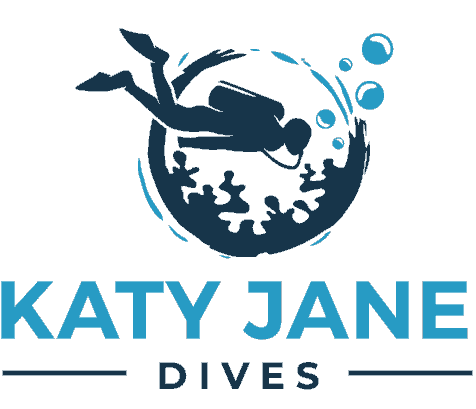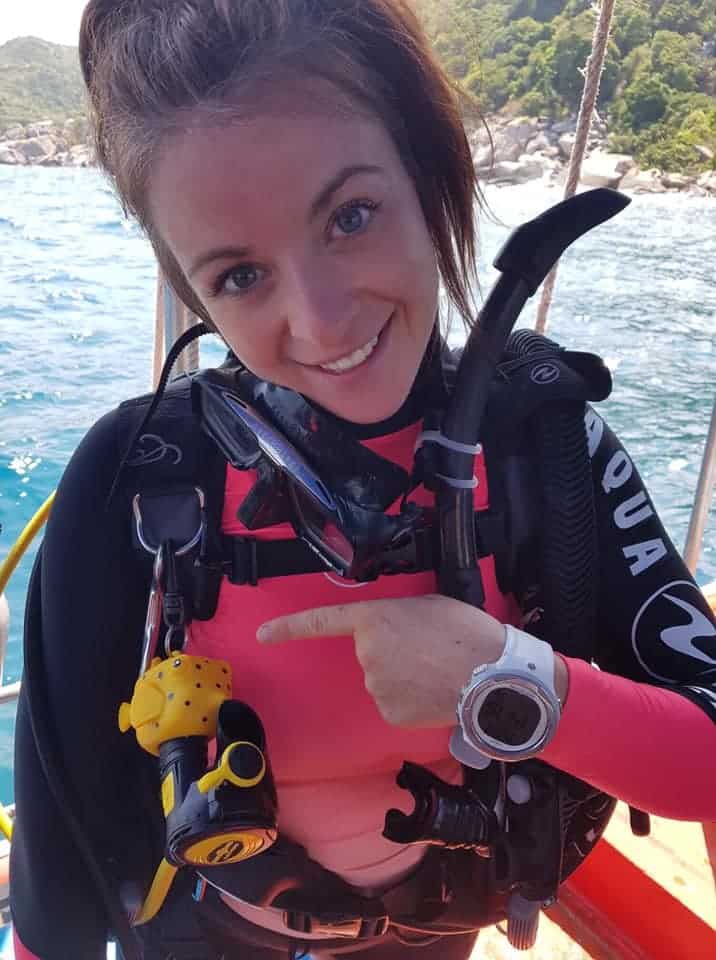When it comes to scuba diving, breathing techniques are a crucial aspect of staying safe and comfortable underwater. Knowing how to breathe correctly can help you optimise your air consumption, reduce physical effort and prevent feelings of anxiety.
If you are new to scuba diving or have trouble finding the proper breathing technique, then this is the article for you.
Scuba diving is often associated with extreme sports. Yes, descending underwater and staying there for up to an hour at a time could be considered extreme. However, it is one of the most relaxing things a person can do once they master their breathing.
Follow along to see how to prepare and execute the perfect breathing technique for your next scuba dive.
Table of Contents
Never Hold Your Breath While Scuba Diving
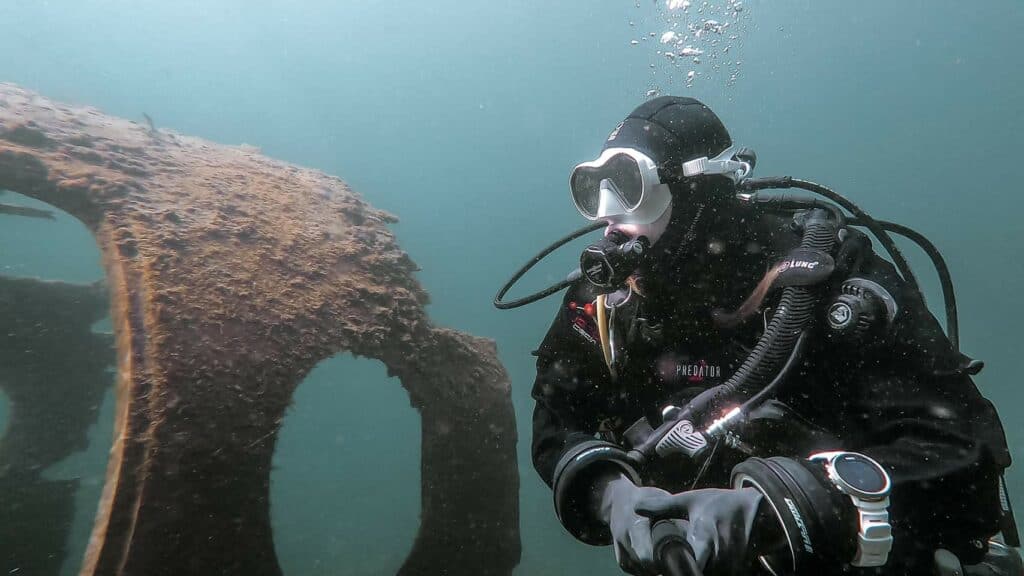
Firstly, we should establish what not to do and misspell some common misconceptions about scuba divers. I have often been complimented by friends and family that are not familiar with scuba diving on how well I must be able to hold my breath.
Holding your breath is extremely dangerous when scuba diving. So much so that the first thing any dive instructor will tell you is to breathe continuously and never hold your breath.
When we scuba dive, our body’s air spaces will contract and expand. As we go deeper, they contract and squeeze down much like vacuum sealing a plastic bag. As we ascend, the opposite happens. Therefore if we hold our breath, our air spaces, most crucially our lungs, will expand like a balloon until they rupture and cause possibly life-threatening injuries.
This all sounds pretty scary, however, we do not need to worry about this at all as long as we have good control over our breathing and stay nice and relaxed as we inhale and exhale.
Breathing Through Your Mouth
One of the most challenging things for a lot of new scuba divers is getting used to breathing through your mouth and not your nose. It can feel very unnatural for many people.
Breathing in through your mouth can also bring on anxiety if you are not used to it. Here are a few tips on how to prepare for this, potentially alien, feeling.
Practice beforehand, in private before you go into the swimming pool or dive site.
Get used to breathing deeply into the diaphragm.
Take small steps. Whether in the pool or open water, when you first get in the water, start by just putting your face in the water with your regulator and having a practice.
Don’t descend until you are ready. Don’t allow other divers to speed you through your preparation. You will feel short of breath if you’re rushed.
These are some small steps you can implement to help get over the initial anxiety that comes with getting your breathing on the right track, and ready for a scuba dive.
Breathing Out is Key
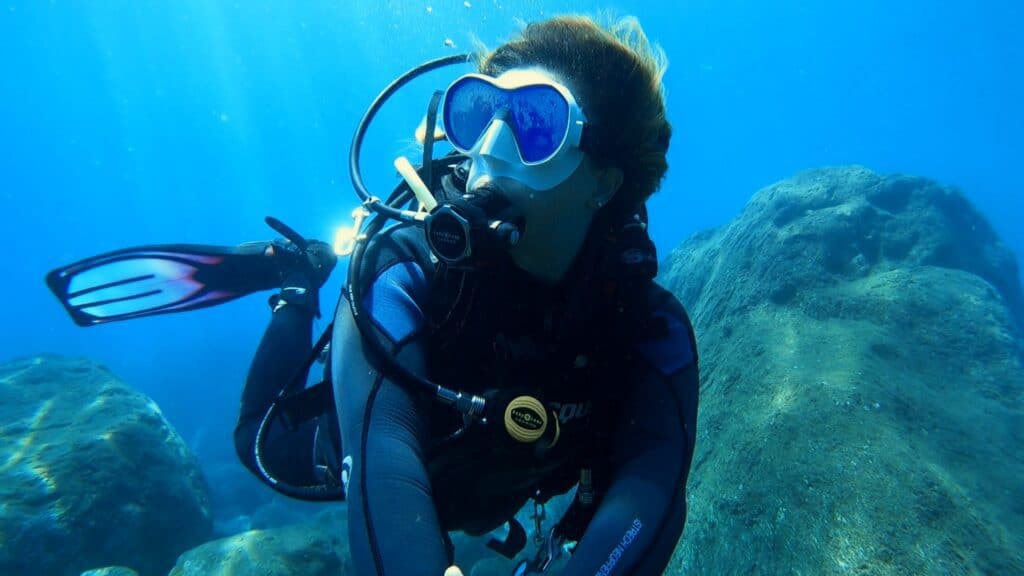
A key component of your continuous breathing technique is the breathing out part. However, when you become so focused on breathing you actually begin to forget to release all of your air from your lungs.
This is one of the most common stumbling blocks that novice divers encounter when trying to perfect their breathing. Here are a few side effects of not breathing out that you may have experienced:
Feeling like you can’t get a full breath in.
Difficulty staying down and a feeling of floating upwards
Poor air consumption
A general feeling of anxiety from holding onto carbon dioxide
These problems occur when new or nervous divers don’t release all of their bubbles slowly. It creates a cycle of rapid shallow breathing that you want to avoid to get the relaxed, peaceful experience you have been sold.
What is the Best Breathing Pattern for Scuba Diving
The best breathing pattern is the one that suits you and makes you feel most at ease in the underwater world. So long as you are following the golden rule of never holding your breath and are breathing continuously into your diaphragm.
Try and avoid focusing on other divers’ breathing patterns and trying to copy them. Everybody has a different-sized lung volume, which will only make you feel like you aren’t doing it right.
Instead, try and follow some of these basic principles when diaphragmatic breathing to establish the best breathing rate for you:
Breathe in slowly and out even slower.
Experiment with using your nose for breathing out to slow your exhale down.
If you’re sinking slightly, breathe in
If you’re rising up slightly breathe out
Use slow, steady kicking techniques. The frog kick is a great option
Slow down all of your movements. If you have an itch on your head, scratch it in slow motion.
By following these principles when scuba diving and practicing diaphragmatic breathing, you will automatically begin to feel more relaxed and find your own version of the best breathing pattern.
How Will My Breathing Improve Me As a Diver
Now that we have established how to breathe underwater and the techniques that you can use to achieve this, we will begin to naturally become better scuba divers.
This is where you start to get it, and you see those big improvements transferring to other aspects of your scuba diving skills. These include:
Achieving neutral buoyancy and controlling it consistently
Better at equalizing on your descent
Better air consumption
Feeling relaxed and enjoying your surroundings fully.
Breathing underwater is so alien at first, but once you find the best scuba diving breathing techniques for you the activity movers from the extreme sports category to one of the most relaxing almost lazy sports you will ever participate in.
Equipment and Breathing
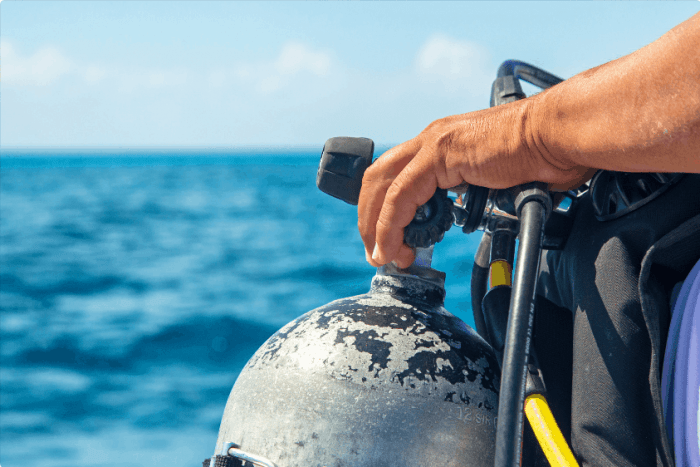
It can be tempting when we first learn anything new to associate our difficulties with the equipment or tools that we are using. I feel that it is important to learn how to breathe first before delving into how different types of equipment can be beneficial or detrimental to your experience. Now that we have established our breathing cycle, let’s look at equipment.
The most essential part of any scuba diving setup is probably the regulator. This feeds you air and keeps you alive. However, not all regulators are made equal.
Unbalanced First Stage Regulator
You will probably learn to dive with an unbalanced regulator. This isn’t a bad thing despite it sounding so. An unbalanced regulator is the most common regulator used in warmer water as rental gear. The main difference is that the first stage is effected by the pressure of the water around it, making drawing a breath more difficult the deeper it descends.
Balanced First Stage Regulator
A balanced first stage regulator on the other hand, offers a smoother breathing experience. This is because the water pressure does not have an effect on the first stage and thus allows your breathing to remain the same at all depths when recreational scuba diving.
You can find out more about balanced and unbalanced regulators in my guide to the best scuba diving regulators.
Venturi
Many modern regulators will have a small knob on the side that you can twist. When you twist this knob you are adjusting the flow rate of the air that comes into your mouth. This is personal preference and some people prefer a smoother breathe or a harder breathe. Be sure to look out for this feature when looking into buying your own regulator.
Mouthpiece
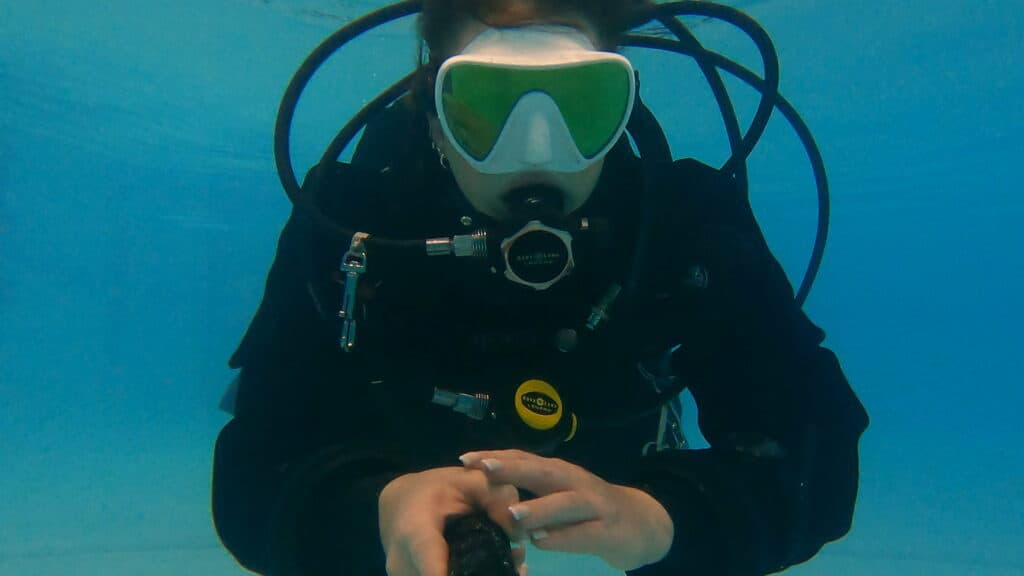
The most simple, yet crucially important part of the regulator set up is a comfortable mouthpiece that fits you. Everybody has different shaped faces, sized mouths, and jaws. Having a comfortable mouthpiece is one easy way to improve your breathing technique.
Do’s and Don’ts When Establishing the Best Breathing Techniques
Do
- Breathe into the diaphragm
- Inhale and exhale slowly and deliberately
- Release all of your bubbles before breathing back in
- Practice mouth breathing before scuba diving
- Start your dive in small steps, face in the water and breathe before beginning your descent
Don't
- Breathe fast and shallow
- Hold your breath
- Breathe in through your nose
- Try and keep up with others and rush
- Compare your breathing rate to other divers
In Conclusion
When it comes to the best breathing techniques for scuba diving, there is no one-size-fits-all answer. Different techniques work for different people. However, slow and deep breathing is generally recommended, as it maximizes the amount of oxygen your body takes in while minimizing the effort required to breathe.
In conclusion, mastering the correct breathing techniques is essential for staying safe and comfortable while scuba diving. So, take the time to practice and perfect your breathing techniques before embarking on your next diving adventure.
